Cervical Traction
Table of Contents
What is Cervical traction?
Cervical traction is a treatment for neck pain that implicates lightly dragging on the head to create space between the bones in the neck (your cervical vertebrae).
Cervical traction can be accomplished either by the healthcare provider or by self at home. It can be accomplished manually (by hand) or with a cervical traction device. Regardless of how it is applied, cervical traction relieves tension and pressure by creating additional space between the neck’s vertebrae. It is used to ease symptoms like pain from a variety of conditions and issues.
Segments of the spine:
- Cervical spine: The neck.
- Thoracic spine: The upper back
- Lumbar spine: The lower back.
Cervical traction gently pulls apart the vertebrae in the cervical spine.
Types of cervical traction:
There are three types of cervical traction which can be given in the following ways:
- Manual cervical traction: This type of traction is performed by the physical therapist, who holds the neck and head in their hands and then gently provides traction or pulling force to the neck. Most of the time, pulling and resting are done in a rhythm, and each position can be held for up to 10 seconds.
- Mechanical Cervical Traction: Mechanical traction for the neck involves using a harness that attaches to the head and neck while a person is lying down on the back. A machine that will exert traction force is attached to the harness, and the machine has a control panel so that the physical therapist can adjust the amount of force applied to the neck.
- Over-the-door traction: You can use this kind of traction at home. It involves securing a harness to a person’s head and neck while they are seated in a chair. Weights, a sandbag, or a water bag are used to apply traction force on the opposite end of the rope, and the harness is attached to a rope that is strung through a pulley system over the door.
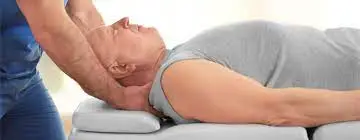
Other types:
- Intermittent traction: Intermittent traction is another modality where a repeated series of rest and traction is applied. It is thought to improve blood flow to the nerve roots and spine parenchyma. During the rest phase, tension is not completely released. Intermittent traction is typically the treatment of choice for joint hypomobility and degenerative disc disease.
- Sustained traction: Neck pain of muscle or soft tissue origin and/or disc herniations are the most common indications for sustained traction. Cervical traction can be applied while the patient is placed supine or seated position. The supine position is selected, allowing for more posterior pressure loading. This will ensure cervical muscle relaxation and transfer less pressure on the temporomandibular joint (TMJ). The sitting position is preferred only for patients who cannot lay supine for a prolonged period of time, as in cases of patients suffering from reflux esophagitis.
What Does Cervical Traction Do?
Cervical traction can be utilized for a variety of purposes.
- It can be used to help reduce compressive forces in the neck, which can help take pressure off of the discs that reside between the vertebrae (spinal bones) in the neck.
- Reduce pain and stiffness in the neck
- Increases flexibility in the neck muscle along the cervical spine.
- It can also open up the spaces where nerves exit the spinal canal, which can help reduce pressure from a compressed nerve.
- The neck’s muscles and joint structures can also be stretched with traction.
How to place and how much weight to be set?
Mechanical traction consists of pinning, with the placement of a Halo device around the head.
The foremost pins are set 1 cm over every one of the eyebrows, and two back pins are put on the far edge of the skull. If additional stabilization is required, the addition of pins may be necessary. A harness connected to the head and neck of the patient person is laying down on his/her back.
A machine that generates a traction force that can be adjusted via a control panel is attached to the harness itself.
For C1 and C2 pathologies, mechanical traction requires a 0-degree angle pull, while below C2 cases require a 20-degree angle flexion. Additionally, the power utilized during pull strain should not surpass 10 lb (4.5 kg) in instances of C1-C2 subluxation, however, can, in any case, build up to 45 lb (20.4 kg). Some practices need an incremental increase of the pull tension, while others prefer choosing the lowest weight to incite an effective response.
Cervical traction must be kept for 15-20 minutes at a time while applying.
Benefits:
Among the most common diagnoses for which cervical traction may be beneficial are:
- Cervical disc disease
- Cervical spine fracture
- Facet joint dislocation
- Atlantoaxial subluxation
- Occipitocervical synopsis
- Spondylosis
- Radiculopathy
- Foraminal Stenosis
- Myofascial tightness
- Neck arthritis
- Cervical muscle spasms
- Radiculopathy
- Herniated or bulging discs in the neck
- Neck strains
If a person has any of these conditions or symptoms, check in with the healthcare provider and visit the PT to see if cervical traction is right for a person. The PT may guide a person on what to do (and what to avoid) to properly manage neck pain.
A doctor may use cervical traction to treat longer-term problems that develop over time, including:
- Spinal stenosis
- Cervical Degenerative disc disease
- Cervical spondylosis
- Scoliosis
Contraindications:
There are no scientific statements that accurately describe the contraindications and relative contraindications for cervical traction.
Possible contraindications and/or relative contraindications to cervical or lumbar traction contain the following:
- Acute torticollis
- Aortic Aneurysm
- Active peptic ulcer disease
- Diskitis
- Old age
- Osteomyelitis
- Osteoporosis
- Ligamentous instability
- Primary or metastatic tumor
- Spinal cord tumor
- Myelopathy
- Pregnancy
- Severe anxiety
- Untreated hypertension
- Vertebral-basilar artery insufficiency
- Midline herniated nucleus pulposus
- Restrictive lung disease
- Hernia
How is Cervical Traction Applied?
Cervical traction can be involved in many different ways. A Physiotherapist can help to determine the best one.
Options include:
The patient’s position will naturally alter the pulling force, with less force required in the supine position due to the person not having to overcome gravity. In this position, 8 to 10 pounds is often suggested.
After being held for 10 to 20 seconds, the force should be slowly released.
The increased pulling force of 40 to 50 pounds can be used, and traction, as well as rhythmic pulling and releasing, should be maintained for 10 to 20 minutes.
Traction can be applied many times throughout the day. Be sure to work closely with the physical therapist to help decide on the best treatment parameters for the specific condition.
Cervical traction at home:
Over-the-door traction: You can use this kind of traction at home. It involves securing a harness to a person’s head and neck while they are seated in a chair. Weights, a sandbag, or a water bag are used to apply traction force on the opposite end of the rope, and the harness is attached to a rope that is strung through a pulley system over the door.
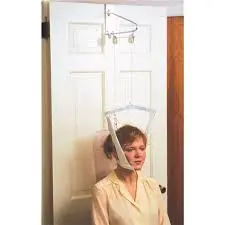
Summary:
Cervical traction may be a safe, wonderfully effective way for patients to resolve neck pain. It may provide numerous improvements to the body, inspiring a person to do it often. Ideally, it will be effective in reducing neck pain and enhancing overall function.
Always talk to the doctor or physical therapist before beginning any treatment. Touch base with them throughout the therapy to discuss the improvements as well as any side effects. They can also help to set up a treatment plan that addresses exactly what the person needs to correct.
FAQs:
How long should you do cervical traction?
Cervical traction can be done once or twice a week or several times a day for as little as a few minutes to as long as twenty to thirty minutes. It proposes adequacy and well-being, yet there is no documentation of the viability of cervical footing past transient agony decline.
Can you do neck traction every day?
Traction treatments generally last 10 to 20 minutes. If a home cervical traction unit is defined, most people can use it every day.
What are the side effects of spinal traction?
Spinal traction can sometimes cause pain that is more harmful than the original condition. Traction therapy should not be used by cancer patients or those with osteoporosis. Spinal traction is known to induce muscle spasms.
What are the benefits?
The stretching of soft tissue structures and relief from pain are two potential advantages of traction. For instance, muscles, lessening muscle spasms, and moving more.
Is cervical traction safe?
Typically, it is secure to conduct cervical traction, but remember that results vary for everyone. The treatment should be pain-free. It is possible that a person can experience side effects such as headache, dizziness, and nausea upon adjusting their body in this manner. A person may lead to fainting.

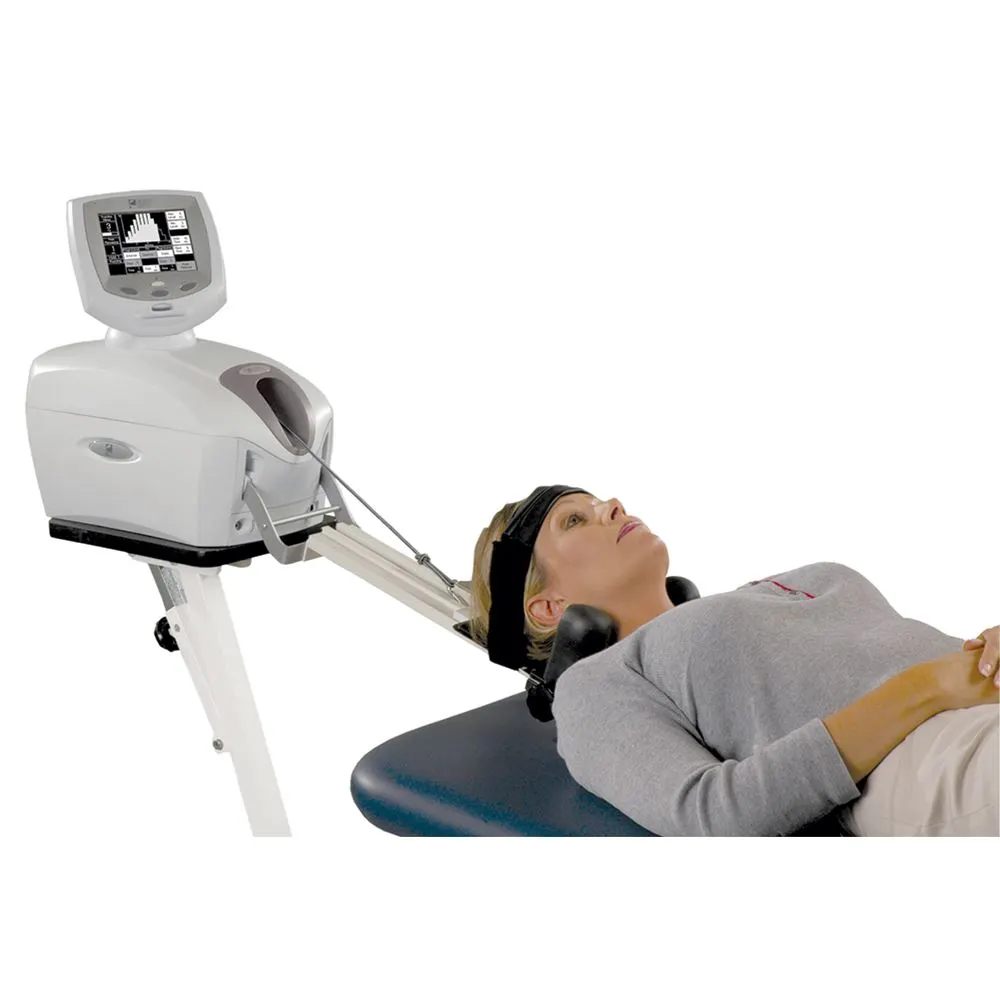

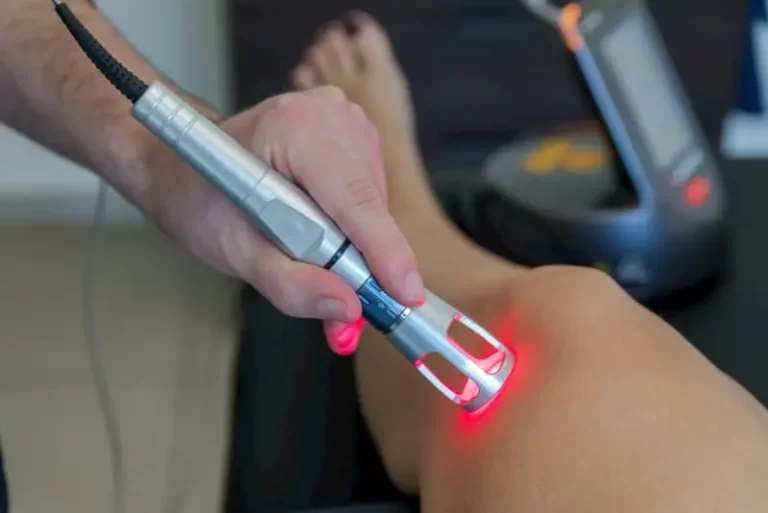
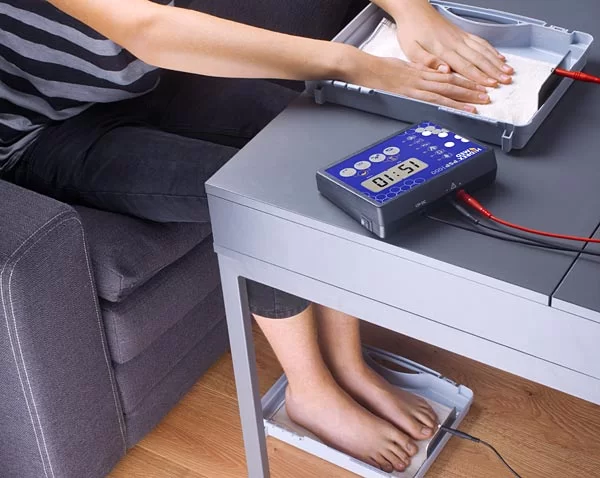

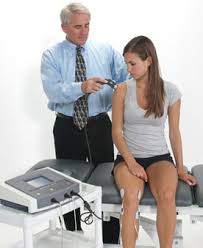

4 Comments